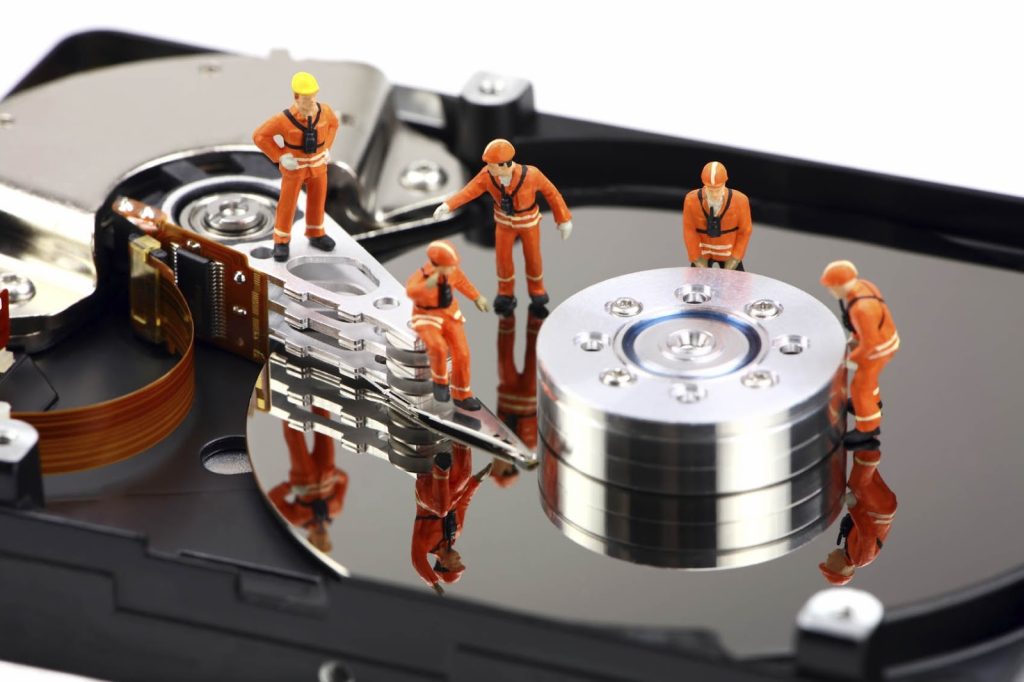Safeguarding your data before initiating a recovery process is crucial to ensure that no additional damage occurs during recovery attempts. The first and most critical step is to stop using the affected device or storage medium immediately. Continued use of a compromised system, whether it is a computer, external hard drive, or other storage devices, can result in further data overwriting or corruption. For example, if data has been accidentally deleted or a disk is failing, writing new data can overwrite the sectors where lost files are stored, making them unrecoverable. Similarly, if malware or ransom ware is involved, any further actions on the infected system might exacerbate the problem, leading to additional data loss. Therefore, it is essential to disconnect the device from power sources, networks, and any other connections that might interfere with the existing state of the data.

Creating a backup or an image of the affected drive is another crucial step in safeguarding your data before recovery. A disk image is a bit-by-bit copy of the entire drive, including all files, folders, and the operating system in its current state, even if some files are damaged or inaccessible. This process ensures that you have an exact replica of your data to work with, allowing you to attempt multiple recovery methods without risking the integrity of the original data. Disk imaging is especially important when dealing with hardware failures or logical errors, as it captures the current state of the drive, providing a fallback option in case any recovery attempts cause further harm. The Data Recovery Guide stored on a separate, healthy drive to ensure it remains safe from the issues affecting the original drive.
Lastly, it is essential to maintain a secure environment for data recovery by using trusted and reliable tools. Avoid downloading or using unknown or unverified recovery software, especially from sources that could introduce additional security risks like malware or spyware. Instead, utilize reputable tools designed specifically for data recovery that have been tested and widely recognized in the industry. Additionally, if the data loss involves sensitive or critical information, consider consulting a professional data recovery expert who has the expertise and proper tools to handle complex recovery situations safely. Experts can often retrieve data that general-purpose recovery software cannot, and their controlled environment minimizes the risk of further data corruption. Furthermore, before engaging in any recovery process, it is advisable to review the steps you plan to take, ensuring they align with best practices for data safety and do not inadvertently compromise the data you aim to recover.
As we connect to various online services, it is crucial to ensure that our personal information, communications, and browsing activities remain private and protected from prying eyes. One solution to this growing concern is the use of encrypted tunnels, which allow users to navigate the internet without fear of being tracked, monitored, or hacked. These encrypted tunnels work by masking the user’s online activity and encrypting all the data transferred over the internet, making it nearly impossible for anyone, including cybercriminals and governments, to access or manipulate the information. The concept behind secure encrypted tunnels is simple but highly effective. When you connect to the internet using an encrypted tunnel, your data is sent through a secure pathway that is shielded from external threats. This tunnel essentially acts as a private passage between you and your destination online, protecting your data from the risks of surveillance, hacking, or interception. By encrypting the data before it leaves your device, it becomes unreadable to anyone who might try to steal it during its journey through the web.
One of the key benefits of using these encrypted tunnels is the enhanced privacy they provide. In an age where personal data is constantly being harvested and sold, the ability to navigate the internet without fear of surveillance is more important than ever. Whether you are browsing social media, shopping online, or even just reading the news, you can rest assured that your activities are shielded from third-party tracking systems. Additionally, encrypted tunnels can also bypass geo-restrictions, enabling you to access content that might otherwise be blocked in your location. Security is another major advantage. With cybercrime becoming more sophisticated, securing sensitive data is essential for protecting yourself from identity theft, financial fraud, and other malicious activities. Nexus link encrypted tunnels provide a strong defense against hackers by ensuring that your data is unreadable even if it is intercepted. This is particularly important for individuals who rely on public Wi-Fi networks, which are notorious for their vulnerabilities.
By using encrypted tunnels, you can safely use Wi-Fi networks without worrying about hackers snooping on your activities. Another often overlooked benefit of encrypted tunnels is their ability to prevent censorship. In some countries, governments impose strict controls on internet access, limiting the websites and services their citizens can access. Encrypted tunnels enable users to bypass such restrictions, allowing them to freely access information and communicate with others without fear of censorship or government surveillance. In conclusion, the use of encrypted tunnels is an essential tool for anyone looking to navigate the internet securely and privately. By providing robust protection against cybercriminals, government surveillance, and censorship, these secure tunnels offer peace of mind and the freedom to explore the online world without fear. Whether for personal use or professional purposes, ensuring your online activities are protected has never been more important.
The need for secure communication and the protection of private data has led to the rise of various encryption technologies and privacy-oriented networks. One such network is the Darknet, which offers users a layer of anonymity and security for their online activities. Among the most renowned services in this arena is Mega Darknet, a platform that provides robust solutions to protect users’ secrets in the vast digital realm. Mega Darknet is a specialized network that prioritizes privacy and security above all else. Unlike the surface web, which is easily accessible and monitored by various entities, the Darknet offers users the ability to communicate and access information in relative obscurity. The key aspect of Mega Darknet is its use of advanced encryption technologies, ensuring that any data exchanged or stored within its domain remains inaccessible to unauthorized parties. This makes it an ideal space for individuals who are concerned about the potential for government surveillance, corporate data harvesting, or malicious hacking attempts.

What sets Mega Darknet apart from other privacy networks is its commitment to safeguarding not only the communication between users but also the content they share. Whether it is files, messages, or personal information, Mega Darknet ensures that all data is encrypted end-to-end. This means that even if someone intercepts the transmission, they would be unable to decipher the information. Furthermore, Mega Darknet’s decentralized architecture ensures that no central authority or server can access or control the data. This reduces the risk of mass data collection and central points of failure, which are common vulnerabilities in traditional online networks. Moreover, Mega Darknet offers a level of anonymity that is unmatched by most other online services. The use of Tor The Onion Router and similar technologies ensures those users’ IP addresses are masked, making it incredibly difficult for anyone to trace their online activity back to them. This is particularly important for individuals who require a high degree of privacy, such as journalists, activists, or whistleblowers, who often find themselves at odds with governments or other powerful entities.
One of the most compelling features of Mega Darknet is its ability to store sensitive data securely without compromising on accessibility. Users can upload encrypted files, ensuring that only those with the proper decryption keys can access the information. This level of control over personal data makes it an invaluable resource for anyone looking to keep their secrets safe in the digital world. While the Darknet is often associated with illicit activities, Mega darknet takes a firm stance against illegal content. Its administrators actively monitor and enforce policies to maintain a safe and legal environment for all users. This allows individuals to enjoy the privacy benefits of the Darknet without fear of encountering harmful or illegal content. In conclusion, Mega Darknet provides an essential service for those seeking privacy and security in a world where digital threats are ever-present. Its combination of encryption, decentralization, and anonymity ensures that users can protect their secrets while navigating the digital realm safely. For anyone concerned about the vulnerabilities of modern online platforms, Mega Darknet offers a safe harbor where privacy is not just a feature but a core principle.